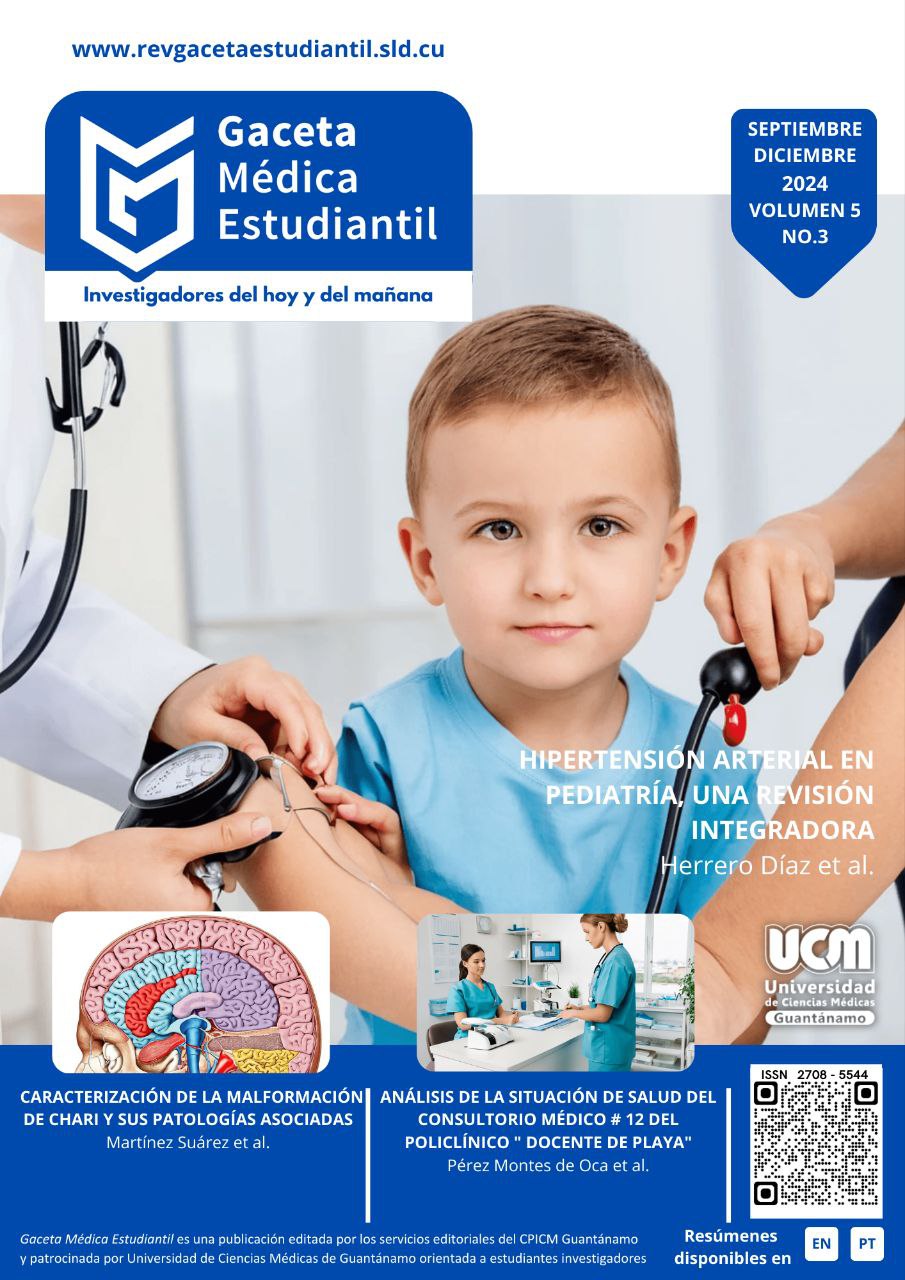Molecular alterations and cellular response in carcinogenesis
Keywords:
carcinogenesis, neoplasia, molecular alterations, cellular responseAbstract
Introduction: neoplasias are diseases whose origin is still being investigated and whose treatment shows only partial efficacy; they are the abnormal multiplication or growth of cells in a tissue of the human body. This is due to a stressful agent that entails, over time and duration, a modification in the affected cells, producing carcinogenesis or cancer is a malignant neoplasia that can grow rapidly, spread and cause damage to the body. Objective: to describe the molecular alterations and cellular response in carcinogenesis. Development: tumor progression cannot be analyzed without considering the microenvironment where it develops; the genetic and epigenetic alterations that lead to neoplastic transformation not only establish constitutive and redundant intracellular signals that confer on the transformed cell the ability to evade the intrinsic and extrinsic mechanisms that control oncogenesis, but also influence other cell populations that make up the tumor microenvironment. Conclusions: carniogenesis has a significant impact on the environment, where exposure to chemical compounds and toxins related to the work environment constitute major risk factors for its development. The effects of carcinogenesis are observed in various contexts and population groups, which underlines its broad relevance in human health.
Downloads
References
Fernández Garrote L, Lence Anta JJ, Casanova Vigo C, Rodríguez Noriega A, Porto Verdecia M. Biología molecular de los procesos neoplásicos. Rev Cubana Invest Bioméd. 1997;16(1):46-58.
¿Qué es la neoplasia? Tipos, causas y tratamientos [Internet]. Formación Alcalá. 2021 [citado 22 Mar 2024]. Disponible en: https://www.formacionalcala.com/articulos/148/que-es-la-neoplasia-tipos-causas-y-tratamientos
Organización Panamericana de la Salud. Clasificación estadística internacional de enfermedades y problemas relacionados con la salud. CIE-10. Décima revisión. Washington, D.C.: OPS; 2003.
León JD, Pareja A. Inmunología del cáncer II: bases moleculares y celulares de la carcinogénesis. Horiz Med (Lima). 2019;19(2):84-92.
López Matamala CS, Romero Warnken FP. Mecanismos de acción de la microbiota oral en el desarrollo del cáncer. Revisión sistemática exploratoria. [Trabajo de grado]. Santiago: Universidad de Chile; 2021.
Suero LEL, Navarro EVH, Chicaiza JO, Valencia SEV, Jara GDLMQ, Alulema XP. Repercusión de la nutrición en la epidemiologia, epigenética y clínica de las enfermedades neoplásicas malignas. Mediciencias UTA. 2019;3(4):12-23.
Vesely MD, Kershaw MH, Schreiber RD, Smyth MJ. Natural innate and adaptive immunity to cancer. Annu Rev Immunol. 2011;29:235-71.
Organización Mundial de la Salud. Global Cancer Observatory [Internet]. Francia: OMS; 2018. Disponible en: https://gco.iarc.fr/
American Cancer Society. Cancer Facts & Figures 2017. Atlanta: American Cancer Society; 2017. Disponible en: https://www.cancer.org/content/dam/cancer-org/research/cancer-facts-and-statistics/annual-cancer-facts-and-figures/2017/cancer-facts-and-figures-2017.pdf
Fulop T, Larbi A, Dupuis G, Le Page A, Frost EH, Cohen AA, et al. Immunosenescence and Inflamm-Aging As Two Sides of the Same Coin: Friends or Foes?. Front Immunol. 2018;8:1960.
Organización Mundial de la Salud. Envejecimiento y salud [Internet]. Ginebra: OMS; 2018. Disponible en: https://www.who.int/es/news-room/fact-sheets/detail/envejecimiento-y-salud
Hanahan D, Weinberg RA. The hallmarks of cancer. Cell. 2000;100(1):57-70.
Hanahan D, Weinberg RA. Hallmarks of cancer: the next generation. Cell. 2011;144(5):646-74.
Hanahan D, Coussens LM. Accessories to the crime: functions of cells recruited to the tumor microenvironment. Cancer Cell. 2012;21(3):309-22.
Greaves M, Maley CC. Clonal evolution in cancer. Nature. 2012;481(7381):306-13.
Clark J, Attard G, Jhavar S, Flohr P, Reid A, De-Bono J, et al. Complex patterns of ETS gene alteration arise during cancer development in the human prostate. Oncogene. 2008;27(14):1993-2003.
Aranda-Souza MA, Rosselli-Cock P, Cisneros-Solano SA, Tenorio-Botello SA. Epidemiología del cáncer de mama en México: análisis de las proyecciones para el 2050. Salud Publica Mex. 2011;53(5):394-401.
Stopeck AT, Thompson PA, Pavani C, Harris JE. Breast cancer [Internet]. Medscape. 2015 [citado 9 Nov 2015]. Disponible en: https://emedicine.medscape.com/article/1945842-overview
Granville LA, Ostrowski ML, Truong LD, Shen S. Pathologic quiz case: unusual morphology in an otherwise classic renal cell carcinoma. Tumor-to-tumor metastasis: pulmonary adenocarcinoma metastatic to clear cell renal cell carcinoma. Arch Pathol Lab Med. 2006;130(4):e37-9.
Sacca PA. Expresión de genes involucrados en la regulación del ciclo celular y proliferación en carcinomas mamarios. [Tesis doctoral]. La Plata: Universidad Nacional de La Plata; 2014. Disponible en: https://ri.conicet.gov.ar/handle/11336/60985
Downloads
Published
How to Cite
Issue
Section
ARK
License
Copyright (c) 2025 Nelson Joel Pumasunta-Villacreses , George Fernando Rios-Meza , Cristian Adrian Barba-López , Alvaro Paul Moina-Veloz

This work is licensed under a Creative Commons Attribution-NonCommercial 4.0 International License.
The Gaceta Médica Estudiantil magazine provides immediate Open Access to its content. It is published under a Creative Commons Attribution-NonCommercial 4.0 International (CC BY-NC) license, which allows sharing (copying and redistributing the material in any medium or format) and adapting (remixing, transforming, and building upon the material), under the terms of acknowledge authorship and not make commercial use of the materials.












